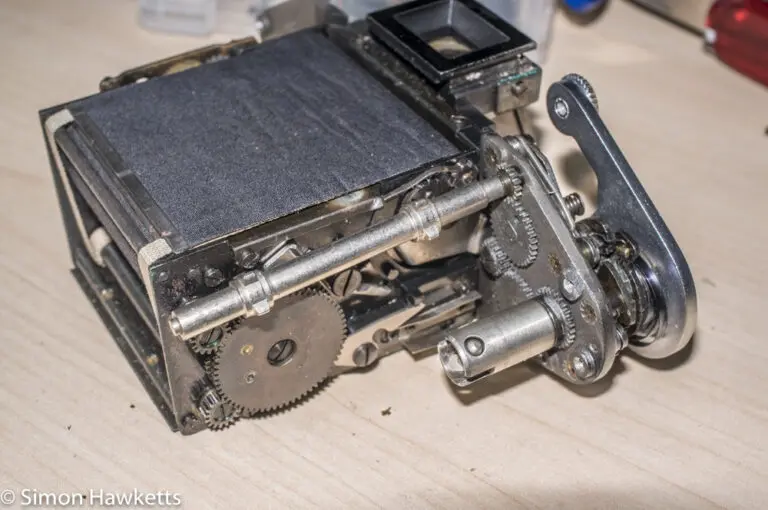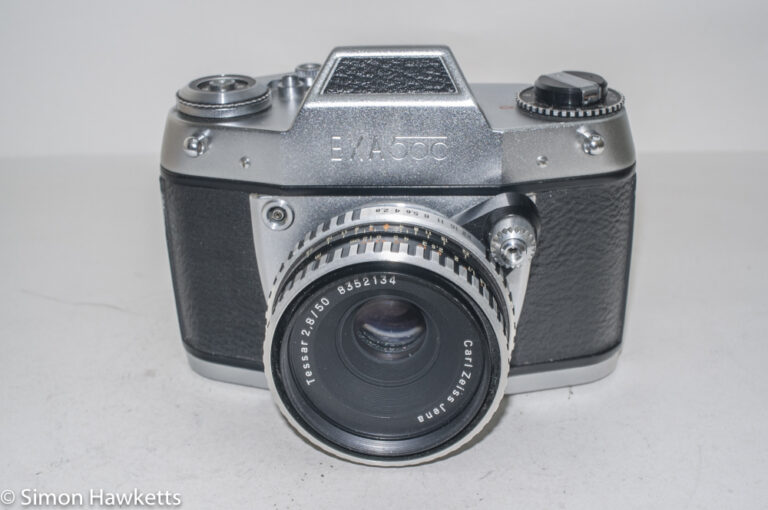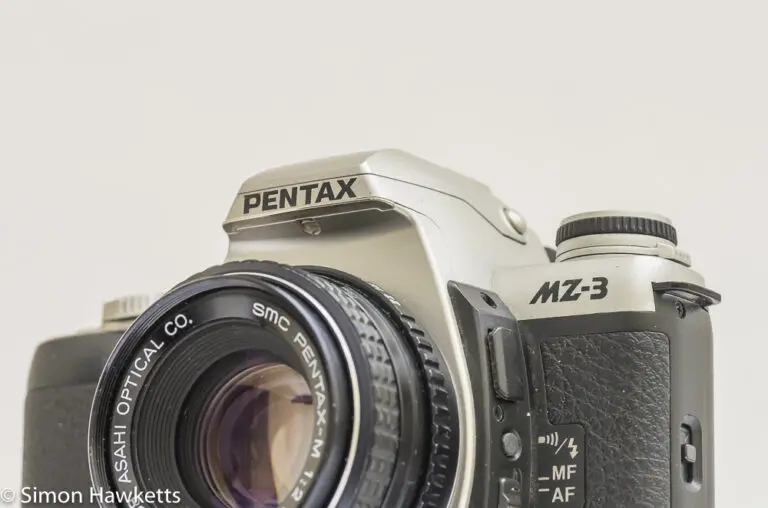Ihagee Exakta Exa Version 4
This post is about version 4 of the Exakta Exa 35 mm camera, which was made by the Ihagee company in Dresden (which at the time was in East Germany) sometime between 1956 and 1959.
Ihagee Exakta Exa Images
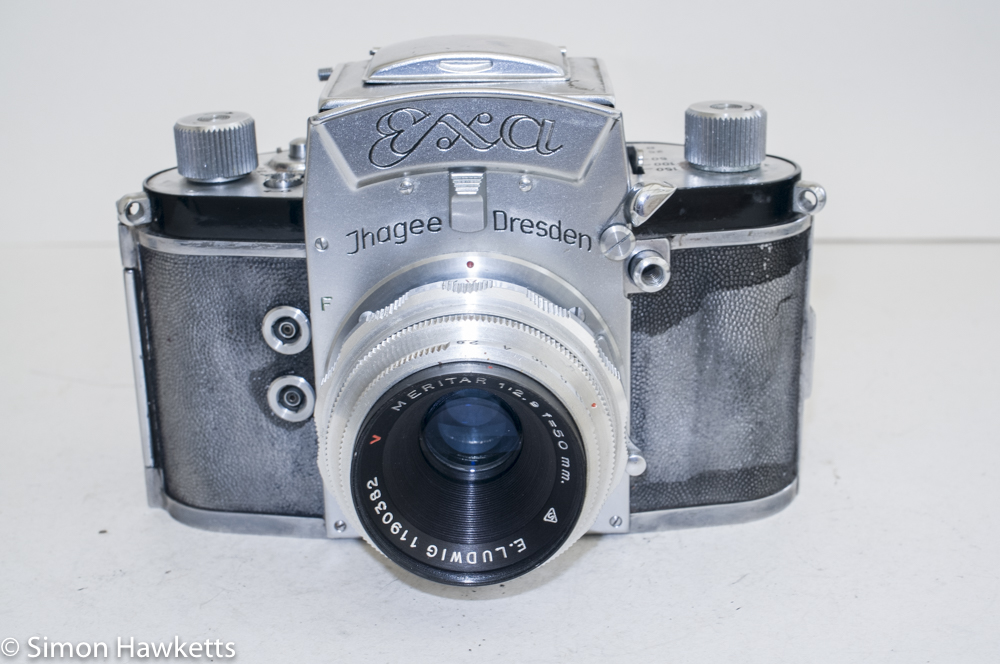
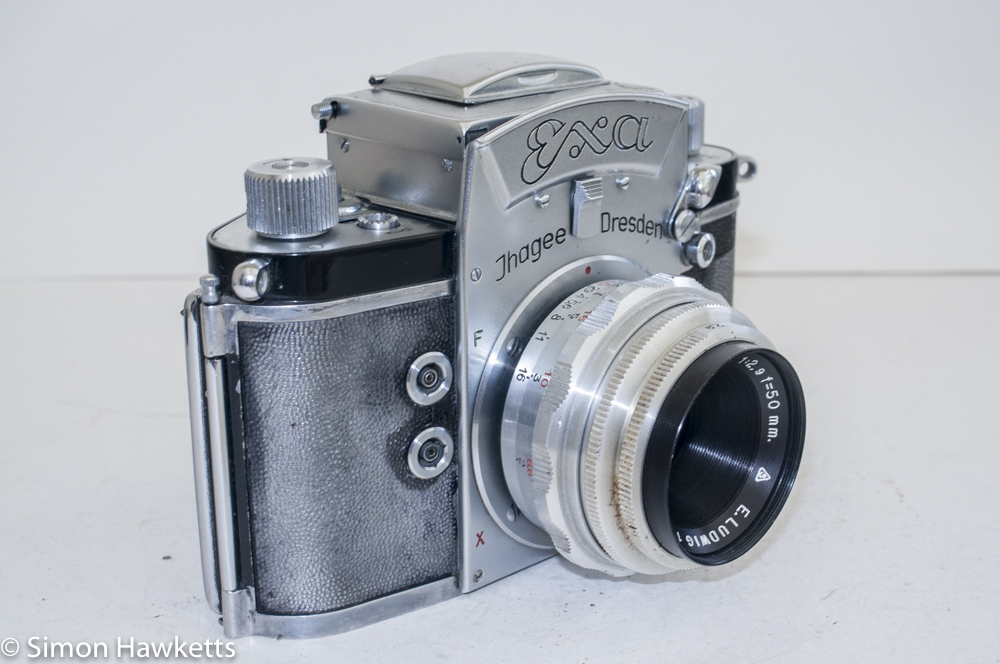
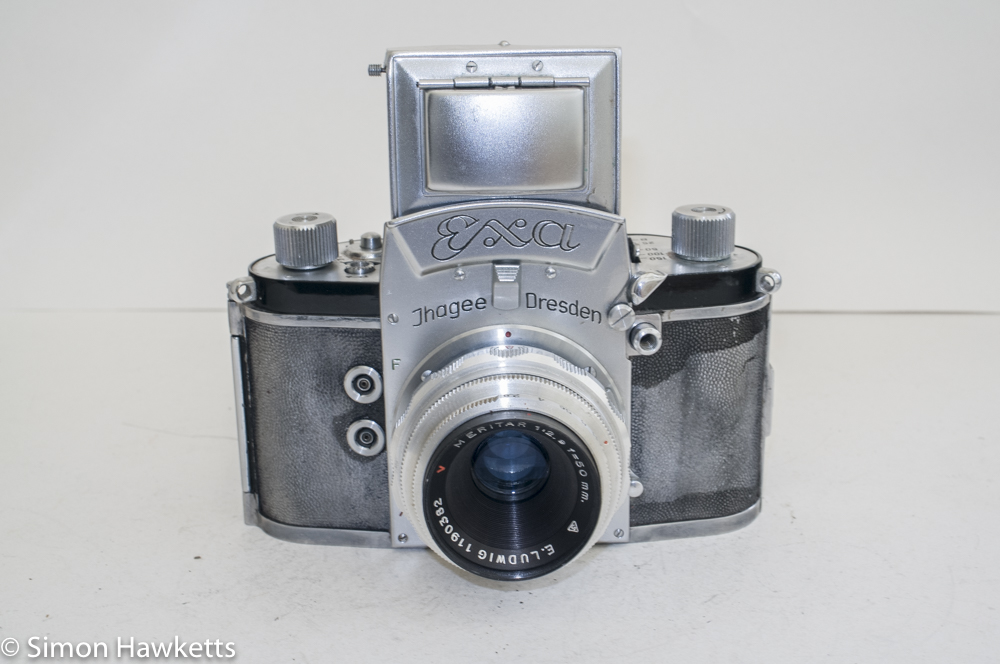
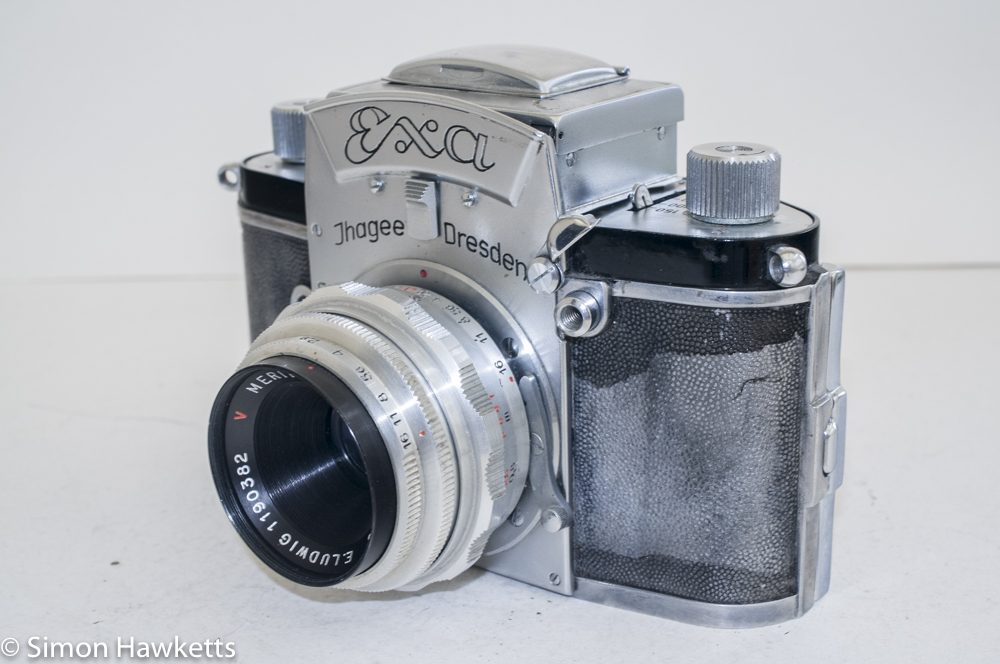
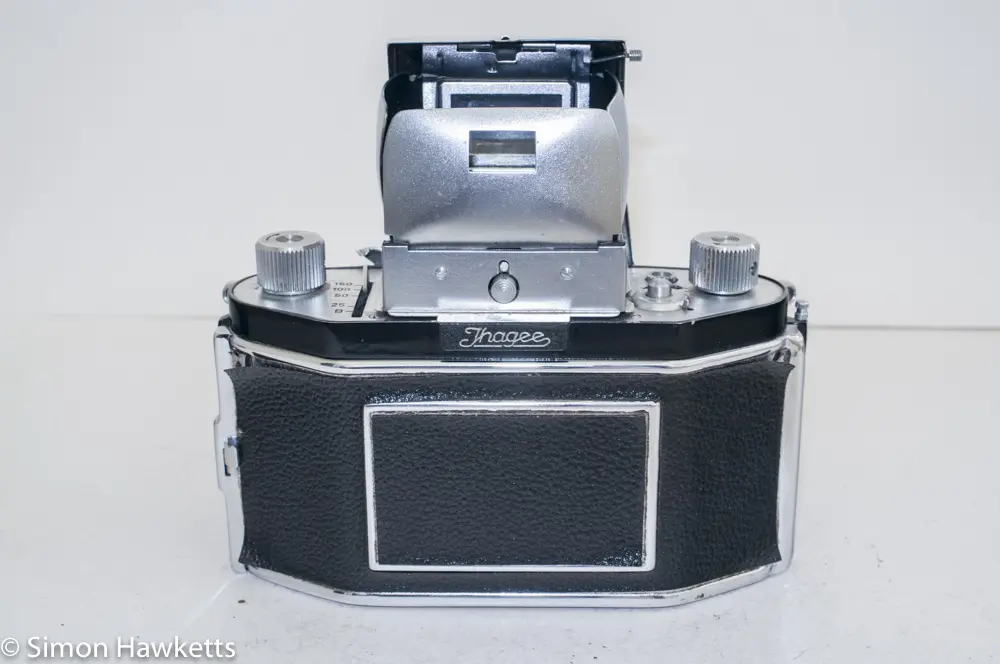
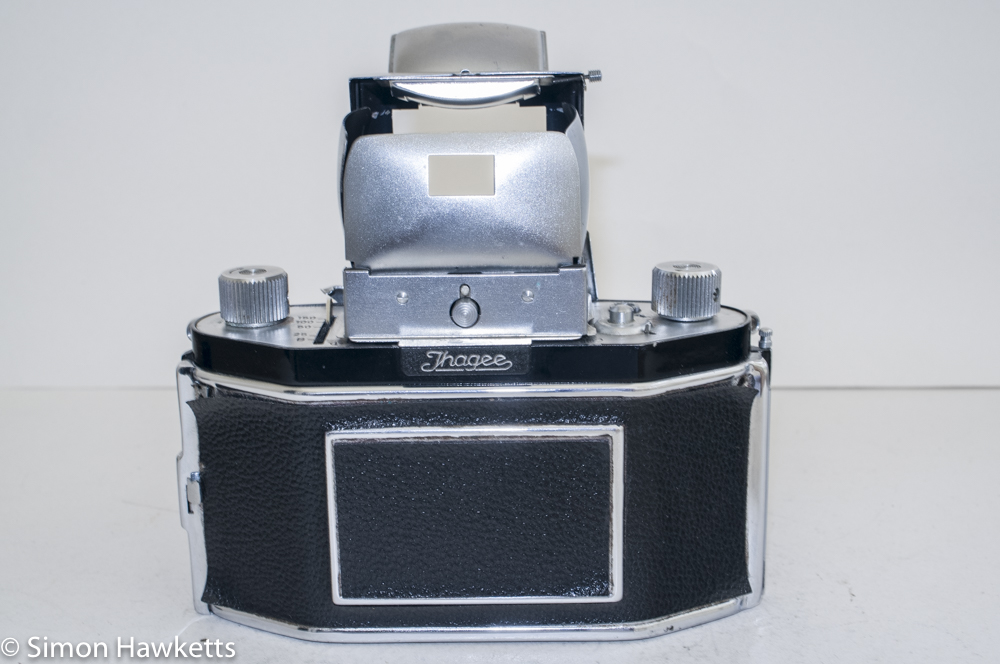
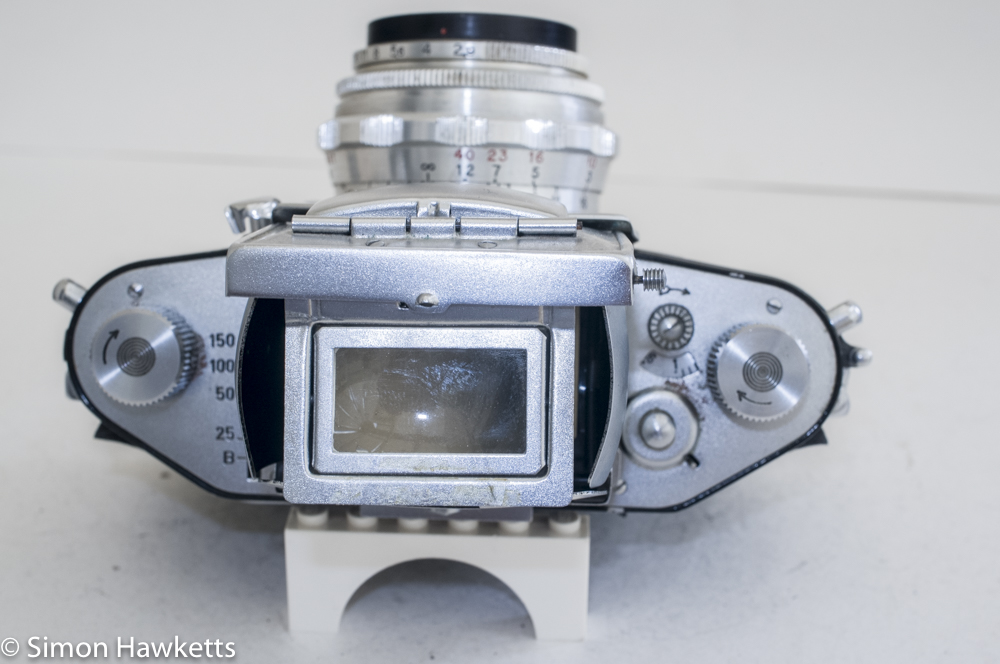
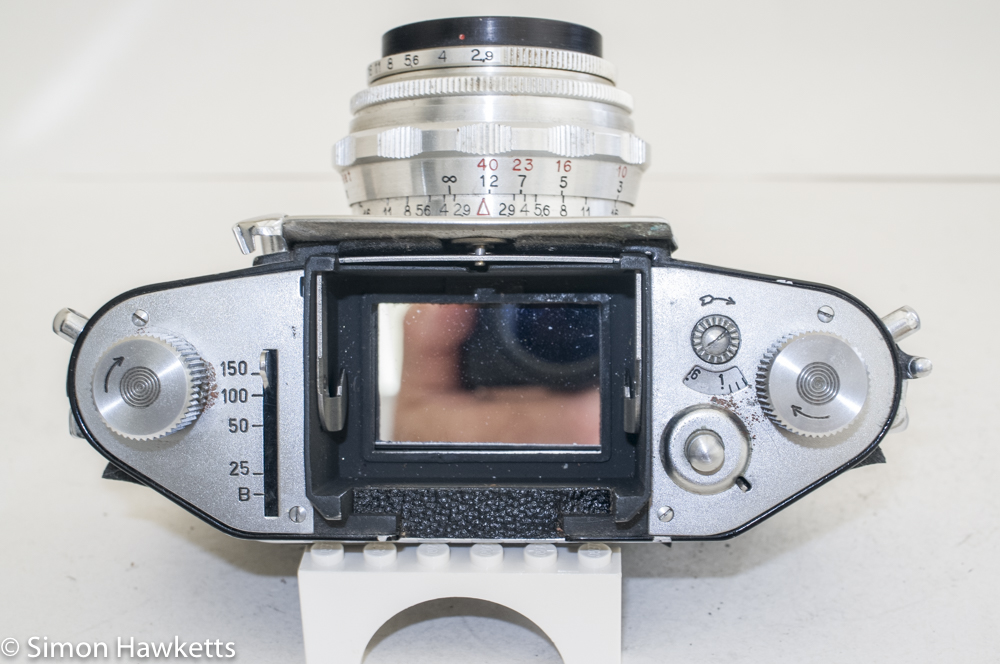
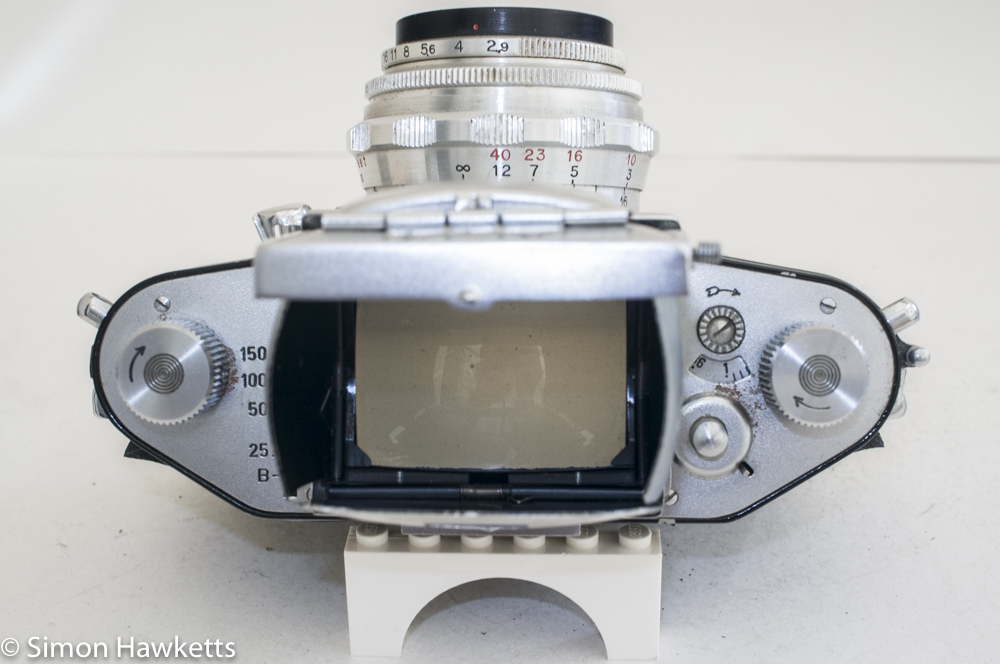
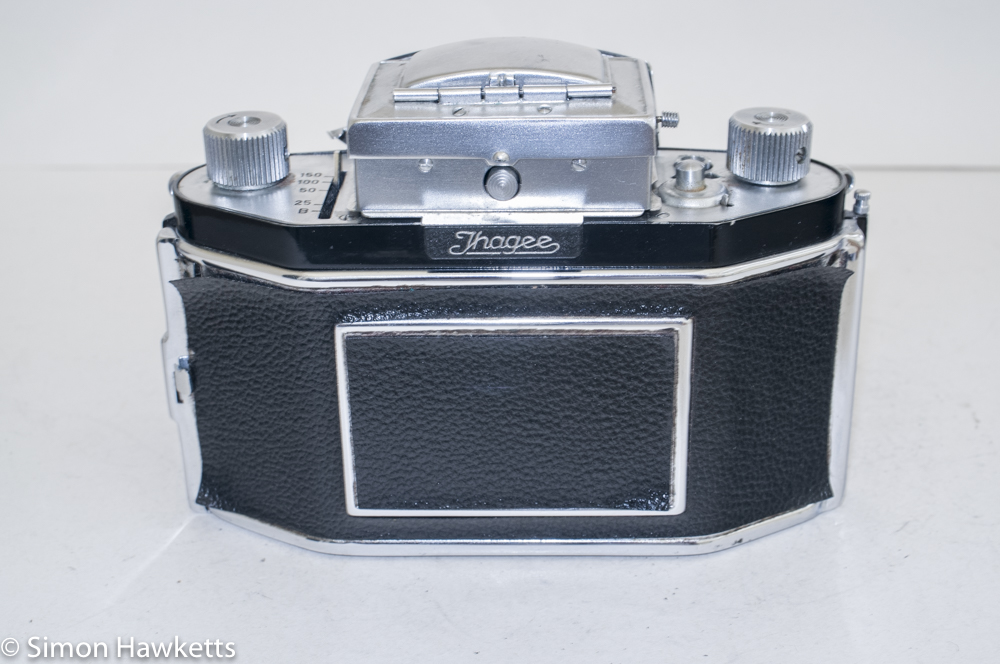
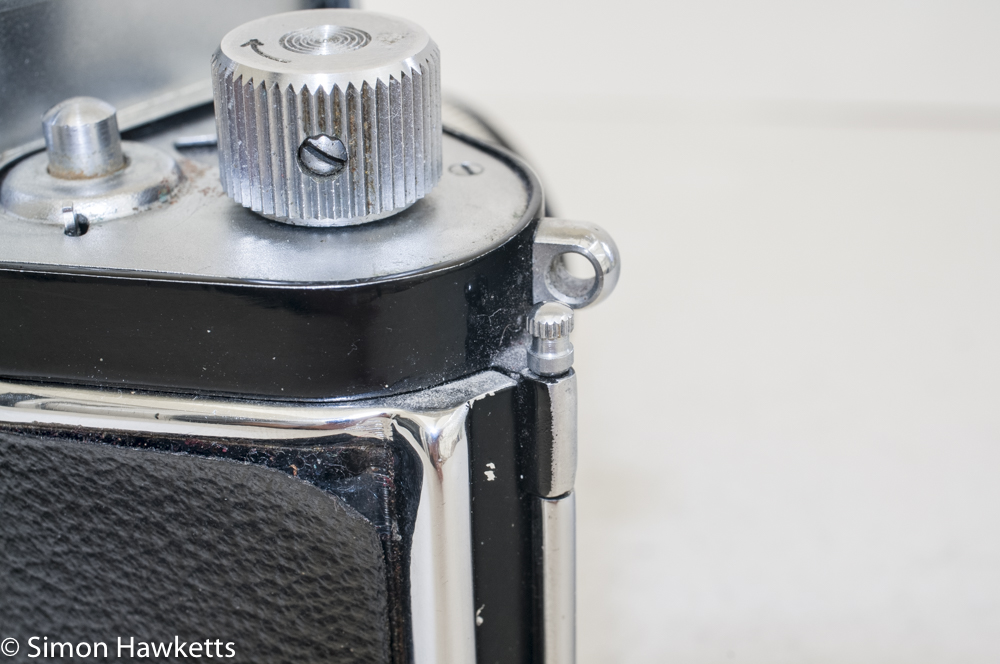
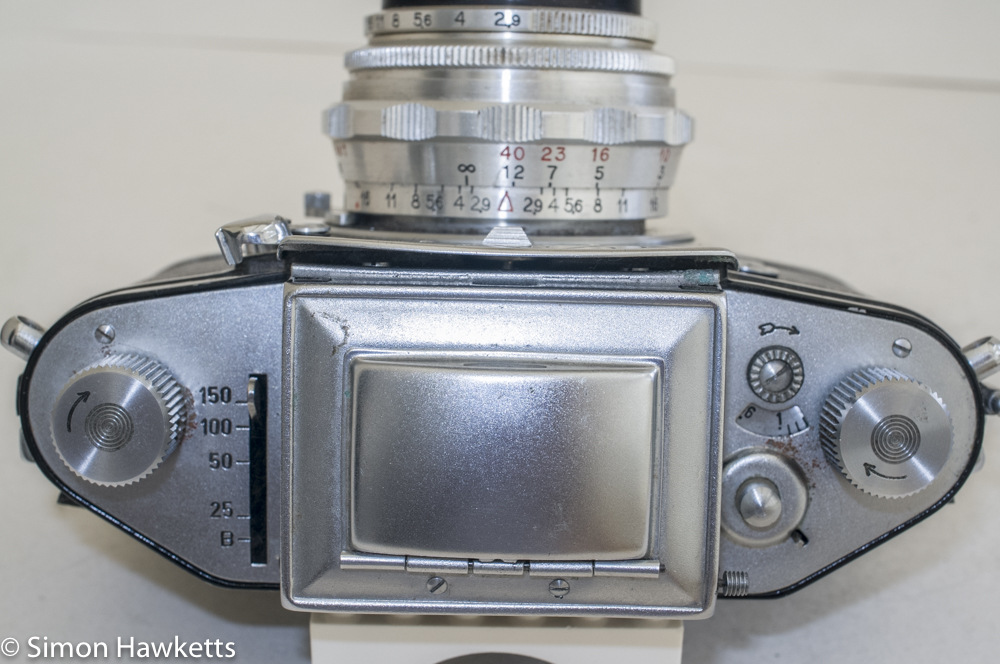
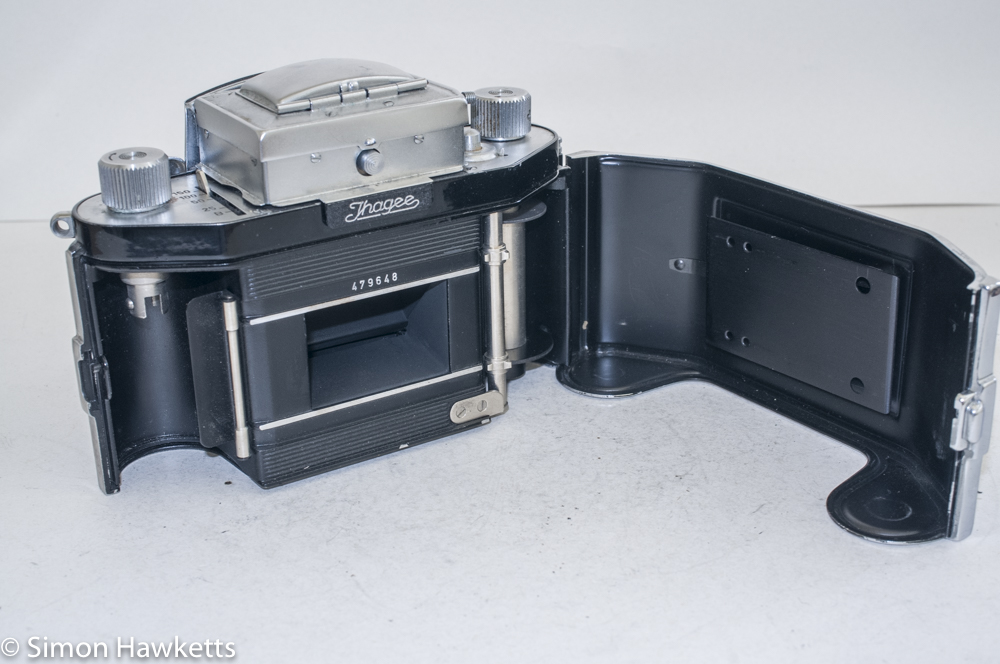
My Exakta Exa Version 4 camera
This camera was an eBay purchase from an auction which I made because I don’t have a Version 4 Exa and I think the older Exa cameras are much more attractive and interesting than the newer models. Of course, when I say newer, I mean 55 years old rather than 65 years old!
Another reason for the purchase was because the camera came equipped with an E. Ludwig Meritar 50 mm f/2.9 lens, which has a reputation for quality, so the purchase of the camera and lens combination for £12:50 seemed a good buy.

When it arrived, very securely packed by the seller, everything seemed to be in good condition from a mechanical point of view, but cosmetically it looks a bit odd because the covering of the camera is suffering from an odd silver staining on the front.
I’ve tried to cover this with black saddle soap, and then black boot polish, but they won’t touch it. It feels as if the coating has a waxy surface which the polish slides off, so I wonder if the camera has had something like oil spilt on it at some point, or even heaven forbid, someone has tried to paint it ?
Other slight cosmetic issues include some light corrosion on the top panel next to the frame counter and another small patch on the back of the front panel – just behind the EXA engraving. Both of these reduced with a little Brasso cleaner, but won’t completely go.
As I said, mechanically the camera seems fine with all the controls operating as they should and the waist level finder, mirror and lens all being nice and clean.
Exakta Exa Version 4 Description
The Exa series were a more affordable and smaller version of the very popular Exakta 35 mm cameras, which had been made by Ihagee since the mid 1930s. They retained the lens mount of the Exakta, which gave them access to a huge number of lenses and accessories, but cut back on the less often used features of the more expensive models.
And, it wasn’t only little used features. I have other Exa series cameras in my collection which all have conventional focal plane shutters, but his camera is the forerunner of the Exa I which has a different, much simpler shutter arrangement.
The mirror forms the first curtain of the shutter, blocking the light from the film plane when lowered into position, and using another flap as the second curtain to complete the shutter action when the release is pressed. This is shown in the video below using the bulb shutter setting (apologies that not all the parts are in focus, the camera I used wouldn’t allow me to set the aperture, so it opened it up because the light level was quite low, still you can see the action).
Because of the particular arrangement of the shutter in this camera, the speeds offered are quite limited – only 1/25, 1/50, 1/100 and 1/150 are available along with the Bulb setting. Another consequence of the shutter action is that the mirror is a non-return design, although not many SLR cameras had an instant return mirror in 1956 (I can’t actually think of any 35 mm camera which has an instant return mirror in 1956).
The viewfinder of the Exa series is removable and can be replaced with many different styles of viewfinder – eye-level, waist level, magnified etc. In this particular camera there is a magnified waist level finder fitted with an additional pop-up fine focus magnifier, and the ability to open a flap on the front of the viewfinder and convert it into a sports finder.
The viewfinder is removed by pressing down on a small button on the front of the camera, mounted between the words Ihagee and Dresden. With this button held down, the viewfinder can be lifted and removed, swapped with any other viewfinder from the Exakta series. One interesting thing about the Exakta viewfinders is that they include the focus screen as part of the removable unit. Once the viewfinder is out, you look down on the mirror!
The film chamber of the Exa is similar to the bigger Exakta cameras in that it has a removable take up spool, so it could theoretically be replaced with a 35 mm film cartridge, so the film could be replaced mid-roll. The Exa doesn’t have the in built film cutter, however, so it would be messier to do that operation in these cheaper cameras.
All in all this is a nice little camera which has the look and feel of the bigger Exaktas but without the bulk, weight and some of the more exotic and less useful features. The only drawback is the somewhat limited shutter speeds available, so you would need to take that into account when choosing an emulsion speed for a day’s shooting.
Exakta Exa version 4 Specifications
- Ihagee Exa version 4 35mm slr camera
- Replaceable viewfinder + focus screen
- Limited shutter speeds 1/25, 1/50, 1/100, 1/150 + bulb
- Settable frame counter
- Removable film take up spool
- Removable back
- Shutter release cover/lock
- Front panel shutter release
- F & X flash sync sockets
- E. Ludwig Meritar 50mm f/2.9 lens
- Body ser no: 479648
- Lens ser no: 1190382
- Manual available on line here
Discover more from Everything Vintage
Subscribe to get the latest posts sent to your email.

